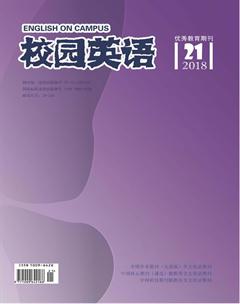Creative Treason in Literary Translation
【Abstract】This paper attempts to analyze creative treason in literary translation focusing on the reasons that creative treason lies in; the forms that creative treason tends to take; its distinctive characteristics and positive impact on the recipient culture.
【Key words】creative treason; forms; characteristics; impact
【作者簡介】雷宏友,咸阳师范学院外国语学院。
Creative treason is a basic law in spreading and receivi
ng culture. Its advancing will bring about further consideration on the traditional translation criteria. In the course of literary translation, creativeness indicates the subjective efforts of the translator made in approaching and reproducing the original works with individuals artistic creative abilities. While the treason in the literary translation reflects the translators objective deviation from the original works for the purpose of achieving some subjective desire.
The characteristics of the creative treason literary translation
Creative treason in literary translation is more vigorously expressed in poetry translation. Neat rhyme, abundant content, highly refined language in the unique form, as well as the characteristic of brevity and suggestiveness make the translators do not know which one should be preserved in the course of translation. English Sinologist Herbert A. Giles translated Yang Juyuans “诗家清景在新春,绿柳才黄半未匀” into:
The landscape which the poet loves is that of early May,
When budding greenness half concealed enwraps each willow spray”
The difference between “新春” in original poem and “early May” in version was pointed out. Some people argued that “early May” is late spring not early spring in China. In fact, for the purpose of rhyming, the translator has to use “early spring” here. Another translator Bynner put Wei Yingwus poet “野渡无人舟自横” into “The ferryboat moves as though someone were pulling”. Someone criticized “as though someone” in version does not correspond with “无人” in the original poem, which goes against “the law of identity”.
Another feather of creative treason is that a series of transformations in form and content occurred in the course of translation. In order to convey the charm of the original works, some additional contents are jumbled up in the translations. For the purpose of keeping the forms of poetry, the loss of meter and the alternation of the words present in versions. As a translator, individuals feeling is mixed. Just as David Hawks expressed in the introduction of his translations “The Story of the Stone”, and red as a symbol—sometimes of spring, sometimes of youth, sometimes of good fortune of property—recurs again and again throughout it. Unfortunately—apart form the rosy cheeks and vermeil lips of youth–redness has no such connotations in English and I have found that the Chinese reds have tended to turn into English golds or greens (‘spring the green spring and ‘gold girls and boys and so forth).I am aware that there is some sort of loss here, but I have lacked the ingenuity to avert it.

